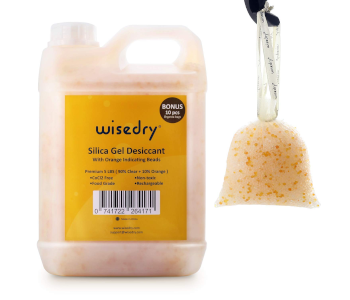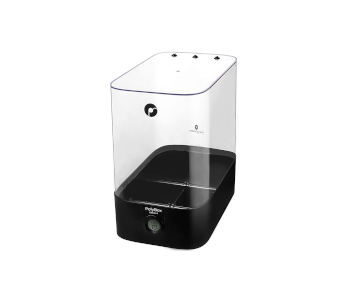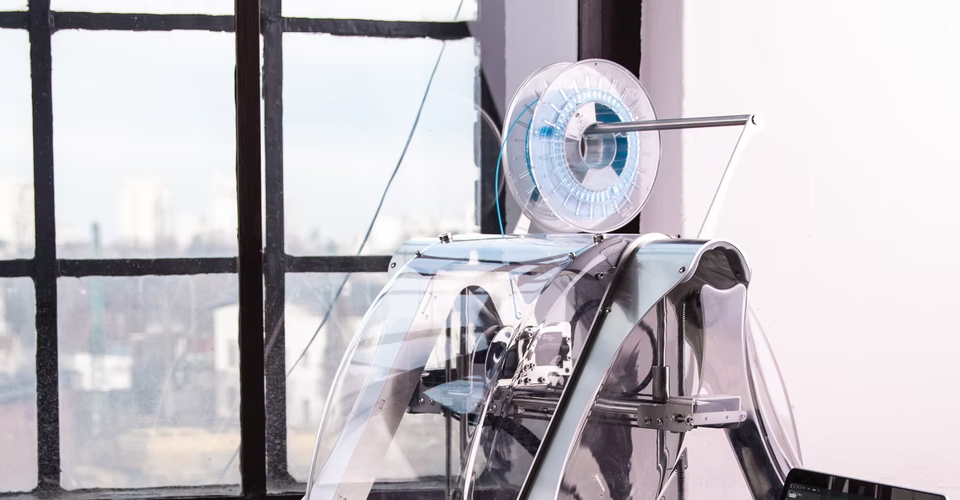How to Keep Your 3D Printing Filament Dry
A frequently quoted advice in 3D printing is to make sure that your filament is dry. There are a lot of things that can go wrong when printing with filament that has absorbed moisture. For this reason, keeping your filaments dry during storage and before use is worth the extra effort.
Filament should be stored in either airtight plastic bags or Mylar bags with some desiccant. This desiccant will have to be replaced and regenerated periodically. It’s also good practice to dry your filament before use either in an oven or in a special filament dryer.
Diligence will be your greatest tool in avoiding filament damage due to excess moisture. Here are the standard practices we can recommend to keep your filaments dry.
Buy lots of desiccant

The first thing you need to buy to store your filaments properly is desiccant. This is a compound that readily absorbs moisture from its surroundings. The best option for desiccant is silica gel because they are so inexpensive and readily available. We suggest buying them as beads that can be repacked into smaller bags.
One of the good things about silica gel is that they change color once they have been saturated with moisture. This is a visual indicator that the desiccant can no longer absorb additional moisture and has to be replaced. Fortunately, silica gel can also be regenerated simply by placing them inside an oven at about 150 °C for about 2 to 3 hours. The silica gel should go back to its original color after regeneration.
Store in airtight containers
With the silica gel on hand, you now need to decide where to store your filaments. There are two practical options here – either plastic bags or Mylar bags will work, as long as they have airtight seals. Some hobbyists use hard plastic cases that are designed for food storage. These can also work but we find that they take up too much space.
Airtight plastic bags are very cheap. You can even reuse the plastic bags that the filaments ship in if they are not damaged. However, they have two distinct disadvantages. Clear plastic offers no protection to the filament from UV degradation. Plastic is also permeable to moisture, albeit at a very small rate. If you’re using plastic bags, you will find that you have to replace your desiccant more frequently.
Mylar bags are more expensive but provide better moisture resistance and UV protection. Most of the large Mylar bags are opaque on both sides. This can make moisture monitoring harder since you can’t visually check the condition of the desiccant without having to open the bags. You will still need to replace the desiccant even if you’re using Mylar bags.
Dry your filament before use

Sometimes, storing your filament properly still isn’t enough. To make sure that you don’t run into any problems mid-print, we recommend that you still dry the filaments before use.
The cheapest way to do this is to place your filament spool inside an oven. The optimal drying temperature will depend on the filament – it is usually just below the glass transition temperature of the filament. Keeping the filament at this temperature for about 2 hours should do the job.
Should you choose the oven method, make sure that your oven can maintain the set temperature accurately. If you have any doubts at all, don’t do it. A difference in temperature of as little as 5 or 1 C can result in your filament fusing together because of glass transition.
A safer method is to use a specifically designed filament drying box. There are lots of products like these from brands like Sunlu and Polymaker. These drying boxes are basically just small, enclosed chambers where heated air is allowed to circulate. The temperature inside the box is accurately regulated and can be monitored via a digital readout.
A nifty feature of these dryer boxes is that they have slots for the filament to pass through. This means that the filament spool can stay inside the box during printing, preventing any moisture uptake during the entire printing process. This could be essential for very large projects that could leave the filament exposed to a moisture-laden environment for upwards of 12 hours.
How important is it to keep your filament dry?
Is keeping your filament dry really worth the bother? There may be some contending opinions, but most professionals would say that proper storage is just standard practice in 3D printing. This also helps you avoid unpleasant surprises when it’s time to print with your filament.
The tell-tale sign of moisture in your filament is a hissing or popping sound in the hot end. This happens when the moisture in the filament is exposed to high temperatures, causing them to vaporize and expand.
Quality-wise, moisture in your filament can cause uneven extrusion. This can manifest either as stringing or as small gaps in your layers.
Not only is this aesthetically unappealing but having inconsistent layers can compromise the mechanical integrity of your print. The expansion of moisture in the hot end can also cause clogging of the nozzle when left unchecked.
After some time, a filament that has been exposed to filament can get brittle and falling apart. This is a natural result of hydrolysis, or a chemical reaction of polymers with water. When a filament reaches this point, the damage has become irreversible, and the filament can no longer be used.
Final thoughts
Keeping your filaments dry is one of the more important parts of housekeeping if you are into 3D printing. The techniques are rather simple. You just have to be diligent about checking on the status of the desiccant and replacing them when needed.
Every now and then, we see accounts of people storing their 3D printing filaments for long periods only to find that they are already falling apart into very small pieces. This is a massive waste of money and frankly only adds to the reputation of 3D printing as a “wasteful” hobby. Taking care of your filaments isn’t just practical – it’s also the responsible thing to do.


